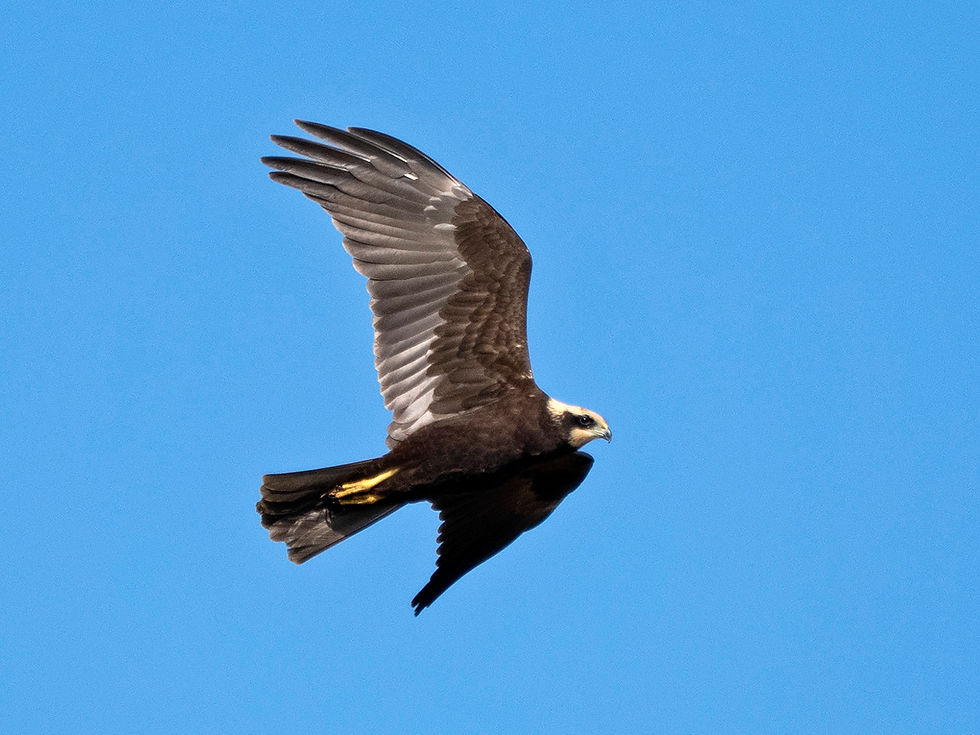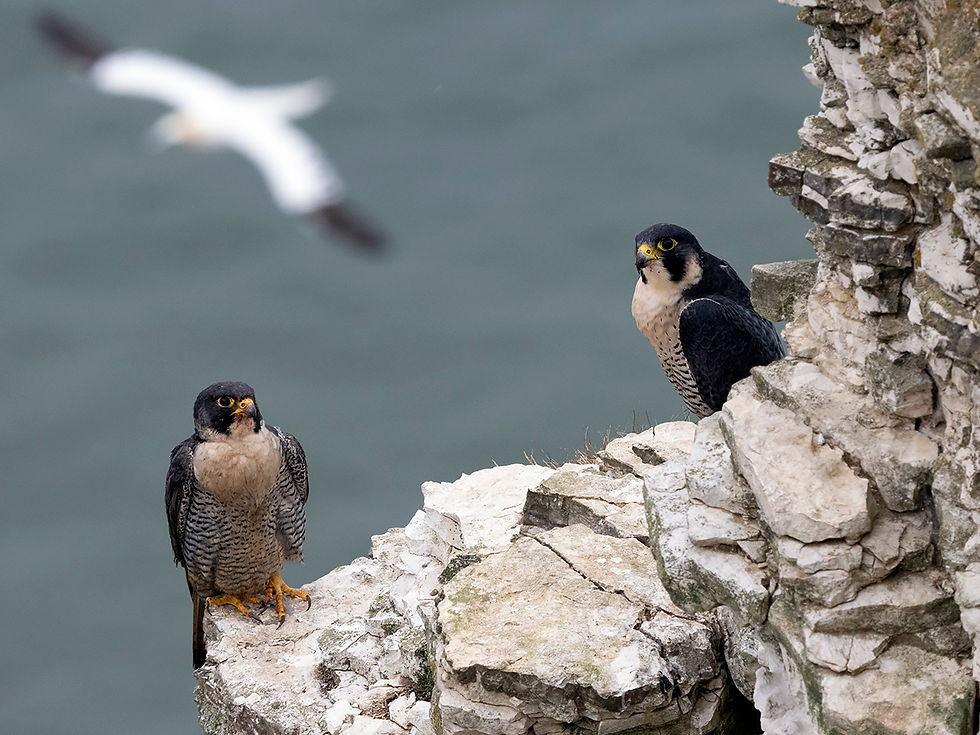Attrition
- Jeff Clarke
- Sep 11
- 3 min read
It’s September as I type these words. The hedgerows are resplendent with berries, awaiting the fall of migrant thrushes from continental Europe, the cereal crops have all been harvested and the fields are a rolling ocean of golden stubble, though some are already turning brown as tractors till the soil and prepare for the next crop.
Brown is also the signature colour of the recently fledged raptors. In recent days the skies have been filled with their juvenile wings. A scan across the undulating terrain finds many a ginger-toned ‘windhover’ beating into the breeze. The Eurasian Kestrel Falco tinnunculus is a master of this distinctive hunting strategy and all around are birds of the year honing their skills to perfection. Only the best will survive the oncoming winter. Most will fail, some will die by misadventure, some will starve, and some may even become prey themselves.

Its diminutive cousin is also here. The Merlin Falco columbarius may be small but it is a bulleting ball of ferocity. Chasing down its avian prey in exhaustive and breathless low-level pursuit, all flicked wings, swept back in jet-fighter profile, with lightning-fast twists and turns.
Clusters of feathers between the stubble rows suggest that the young bird sweeping past me, in hot pursuit of a finch, is a quick learner and may well be a winner in the survival stakes.

The juvenile Eurasian Sparrowhawks Accipiter nisus are making themselves obvious with regular raids on the local bird feeding stations, though most attacks end in failure. When the winds change and bring in fresh migrant birds their numbers seem to double overnight, as if they know some weary travellers will be resting in the isolated patches of cover, awaiting their talons.

The Common Buzzard Buteo buteo pairs are now busy repelling wandering juveniles, these young birds need to find an unoccupied territory with sufficient food, but getting there requires them to run the gauntlet. Pair after pair rises up to greet them and escort them off the premises. The local farmland is a haven for young buzzards, food is plentiful, but woodlands suitable for supporting a breeding pair are at a premium. This gives the immature birds a breather, a place to scratch a living for a couple of years, until they themselves are ready to enter the competition to secure a mate and a breeding territory.

Western Marsh Harrier Circus aeruginosus is by far the most frequently encountered larger raptor found locally. A scan from a suitable vantage point almost always finds at least one airborne in the autumn months, but it’s not unusual to spot five or more birds at once in August and September. The vast majority are juveniles, sometimes nicknamed ‘cream-crowns’. These birds are great wanderers and wing-tagging has demonstrated that some birds of the year, hatched in Norfolk, frequently end up spending part of their first autumn quartering the fields around Flamborough Head.

The cliffs hereabouts are home to our most charismatic raptor. Power, speed and dynamic stooping attacks are the essence of the Peregrine Falcon Falco peregrinus. The local pair had a change in personnel in the early part of the breeding season. The old female went missing, presumably died, but she was quickly replaced by a young female, her immature brown plumage a giveaway to her youth. Her first breeding attempt ended in expected failure. Peregrines can take a few years to develop good parenting skills. Hopefully she’ll survive the winter for a second attempt next year. My last photograph of her showed she had moulted into a more adult-like plumage and maybe she’s also matured her understanding of what it takes to raise chicks to fledging. Fingers crossed.

In recent days I found a juvenile kestrel killed on a very quiet local road and a buzzard, also a victim of traffic, on a rather busier A-road. A local dog-walker discovered a juvenile marsh harrier with a broken wing. It was subsequently taken into care. For birds of prey avoiding an untimely death is fraught with difficulty. Most don’t make it. For now though, I’ll enjoy this bounty of raptors while it lasts. Winter is coming.




Comments